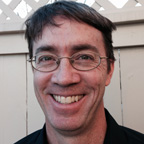- About Archives
- About SAA
- Careers
- Education
- Publications
- Advocacy
- Membership

Professional Experience: Curator of Manuscripts and University Archivist, Special Collections, University of Vermont, 2014–present. Curator of Manuscripts, Special Collections, University of Vermont, 2004–2013. Technical Services Librarian/Archivist, Special Collections, University of Vermont, 2001–2004. Oral History Project Coordinator, Dartmouth College, 2000–2001. Library Specialist, Lyndon State College, 1999–2000. Librarian/Archivist, Carol R. Johnson Associates, 1998–1999.
Education: MA, History, University of Vermont, 2009. MLIS, Simmons College, 1998. BA, Philosophy, University of Vermont, 1990
Professional Activities: Society of American Archivists: Manuscript Repositories Section, Steering Committee Member, 2009–2011, Chair-Elect, 2011–2012, Chair, 2012–2013, Immediate Past Chair, 2013–2014; Awards Committee, Co-Chair, 2009–2011, C.F.W. Coker Award for Description Committee, Member and Chair, 2005–2008; Congressional Papers Roundtable, Steering Committee, 2009–2011; Description Section, Steering Committee, 2004–2008. Archives Leadership Institute: Attendee, 2014. New England Archivists: Nominating Committee, Member 2012 and 2003, Vice President, 2006–2007, President, 2007–2008, Immediate Past President, 2008–2009; Local Arrangements Committee, Chair (Fall 2005 meeting), 2004–2005; Program Committee, Member (Spring 2003 meeting), 2002–2003; Newsletter, Co-editor, 2001–2004. Vermont Historical Records Advisory Board: Board Member, 1999–present. Grant reviewer: NEH, NHPRC. Northeast Document Conservation Center: Advisory Committee Member, 2006–2012. NELINET: Member, Digital Services Advisory Committee, 2001–2005.
Selected Publications: “Vermont Hay Harvesting Films," Microform & Imaging Review, vol. 38, no. 1 (Winter 2009), 34–36. “Between This Time and That Sweet Time of Grace: The Diary of Mandana White Goodenough”, Vermont History vol. 77, no. 1 (Winter/Spring 2009), 38–56. Burns, Chris; Salesky, Winona, "Drinking Milk with Republicans: Lessons Learned While Building a Center for Digital Initiatives," Microform & Imaging Review, vol. 36, no. 3 (Summer 2007), 105–115.
***
Question posed by Nominating Committee: How would you utilize your skills and experience to help make SAA thrive in an environment that expects more communication, collaboration, and demonstrated action?
I have over 15 years of experience in the archival profession and have held a number of leadership positions within SAA and other archival organizations. I am well prepared for this role and feel I have a unique voice to add to the leadership team. I have the ability to gather input and bring people together to move projects forward. I listen well, am a creative problem solver, and have a demonstrated record of achievement within and outside of SAA.
As Chair of the Manuscript Repositories Section, I led the effort to create the Jump In initiative, which provided incentive for archivists to begin to manage born-digital records. The effort grew out of a feeling on the Steering Committee that we wanted to get something concrete done. It was a true collaboration, with support from our Council liaison, SAA staff, OCLC, and the participation of the archivists in the program who shared their work online and at the annual meeting. SAA leadership must support and help to create opportunities for individuals and groups to take action on issues. A key Council duty is serving as liaison to component groups. These groups should be encouraged to experiment and take risks, as well as communicate and collaborate more with each other.
Drawing from my work and service experience, I am particularly interested in striving to ensure that SAA is serving the needs of newer professionals and archivists at smaller institutions. There are archivists all over the country that are not formally part of SAA or not able to attend annual meetings. SAA is an influential part of the work that these archivists do, whether directly or indirectly, and it is crucial to recognize the role that other archival organizations play and to find new and innovative ways to collaborate with these groups.
Students and new professionals have been bringing energy and new ideas to the profession for many years, as evidenced in the last few years by the creation of the SNAP roundtable and discussions around the annual meeting, internships, and career opportunities. Recent conversations at conferences, on social media, and on the A&A liststerv show that SAA and its leadership can be responsive to new voices, and they also show how we benefit when some collective assumptions are challenged. The challenge for SAA is to encourage productive dialogue while not tolerating what the Code of Conduct refers to as “harassment in any form.”
It is an exciting time for SAA. The challenges related to managing digital records remain great, efforts to revamp the annual meeting are underway, how we communicate about archives and archival issues is rapidly changing, and there is an increasing emphasis on diversifying the historical record and the profession. I would welcome the opportunity to serve on Council and help shape SAA’s role in these developments.